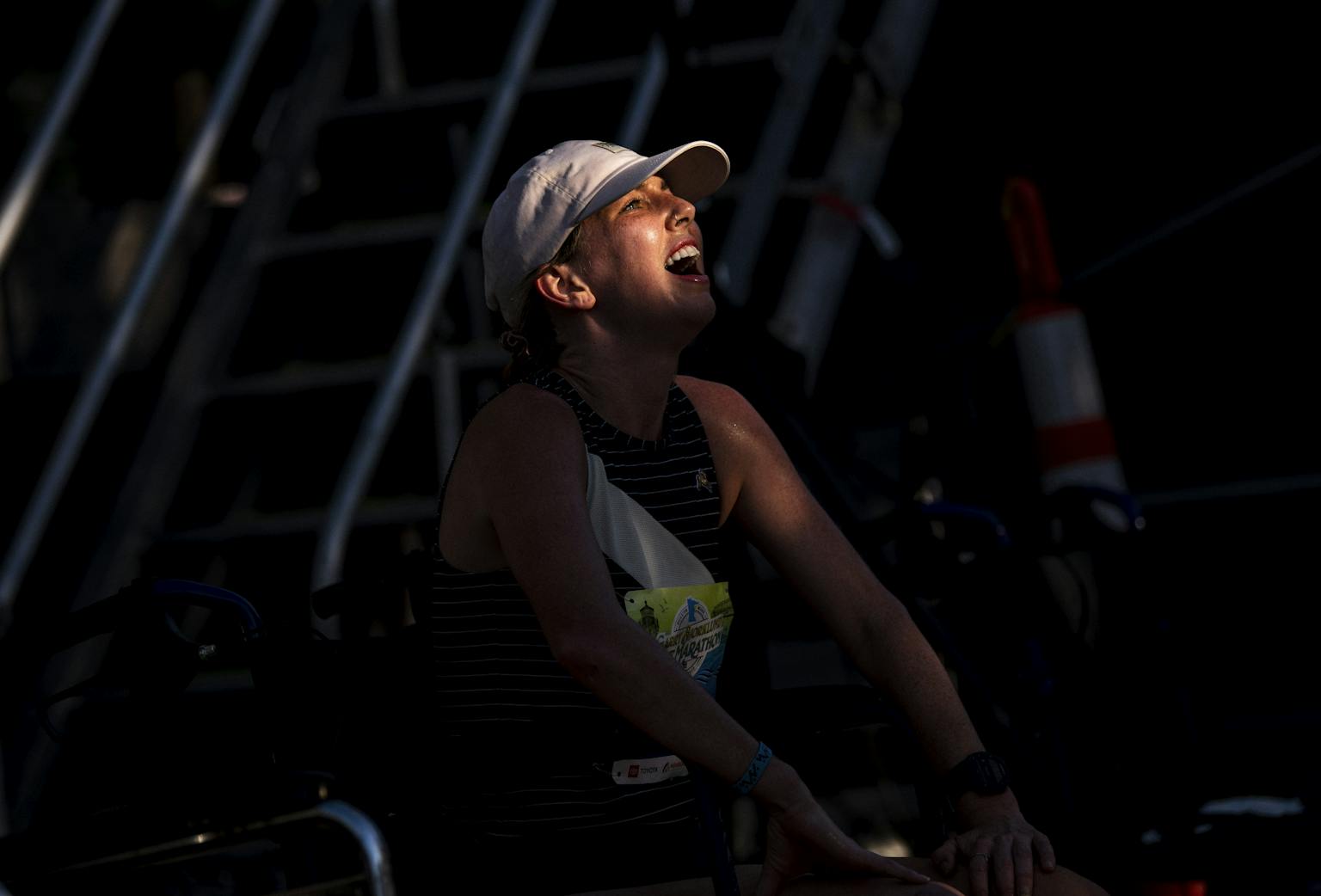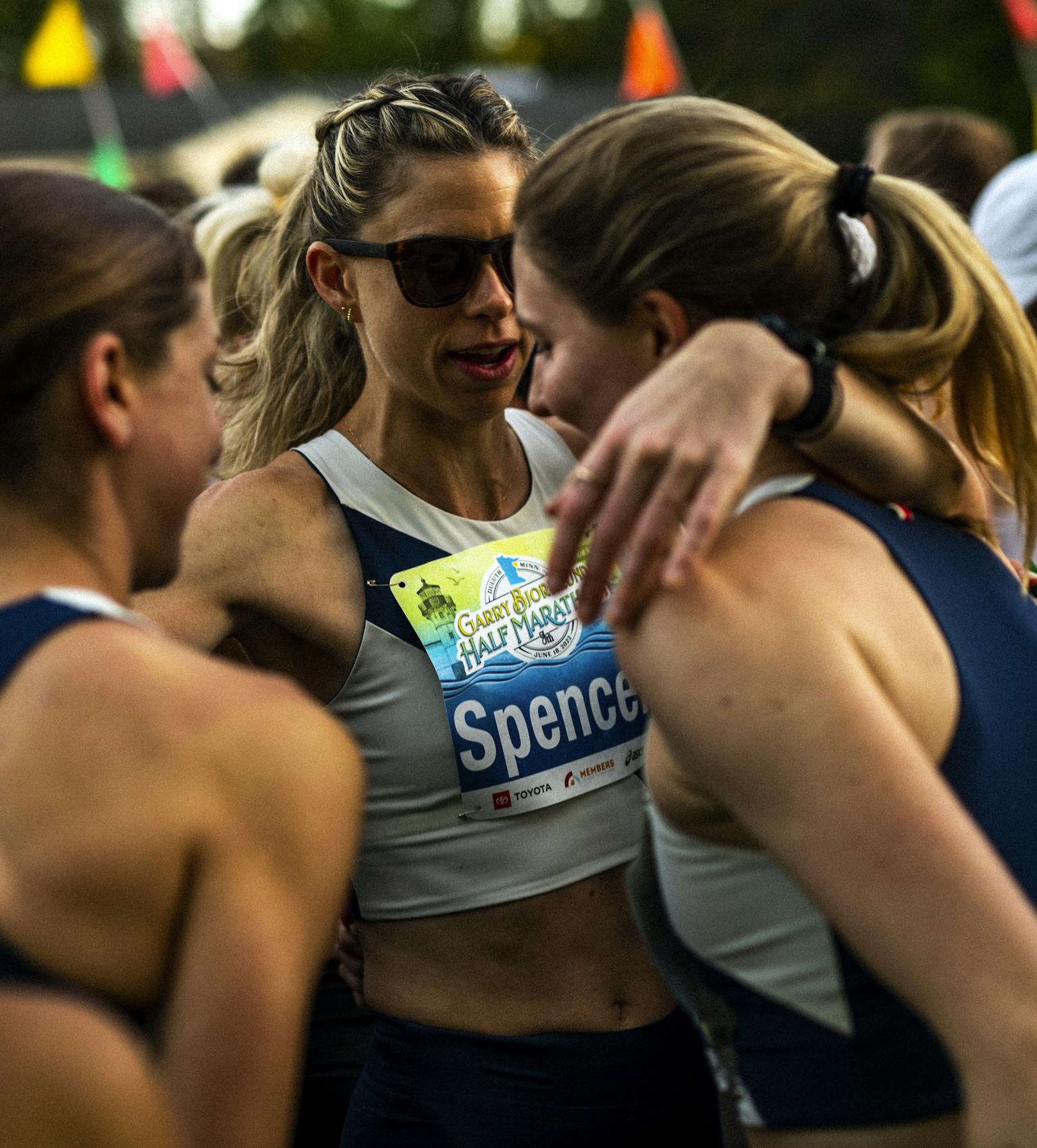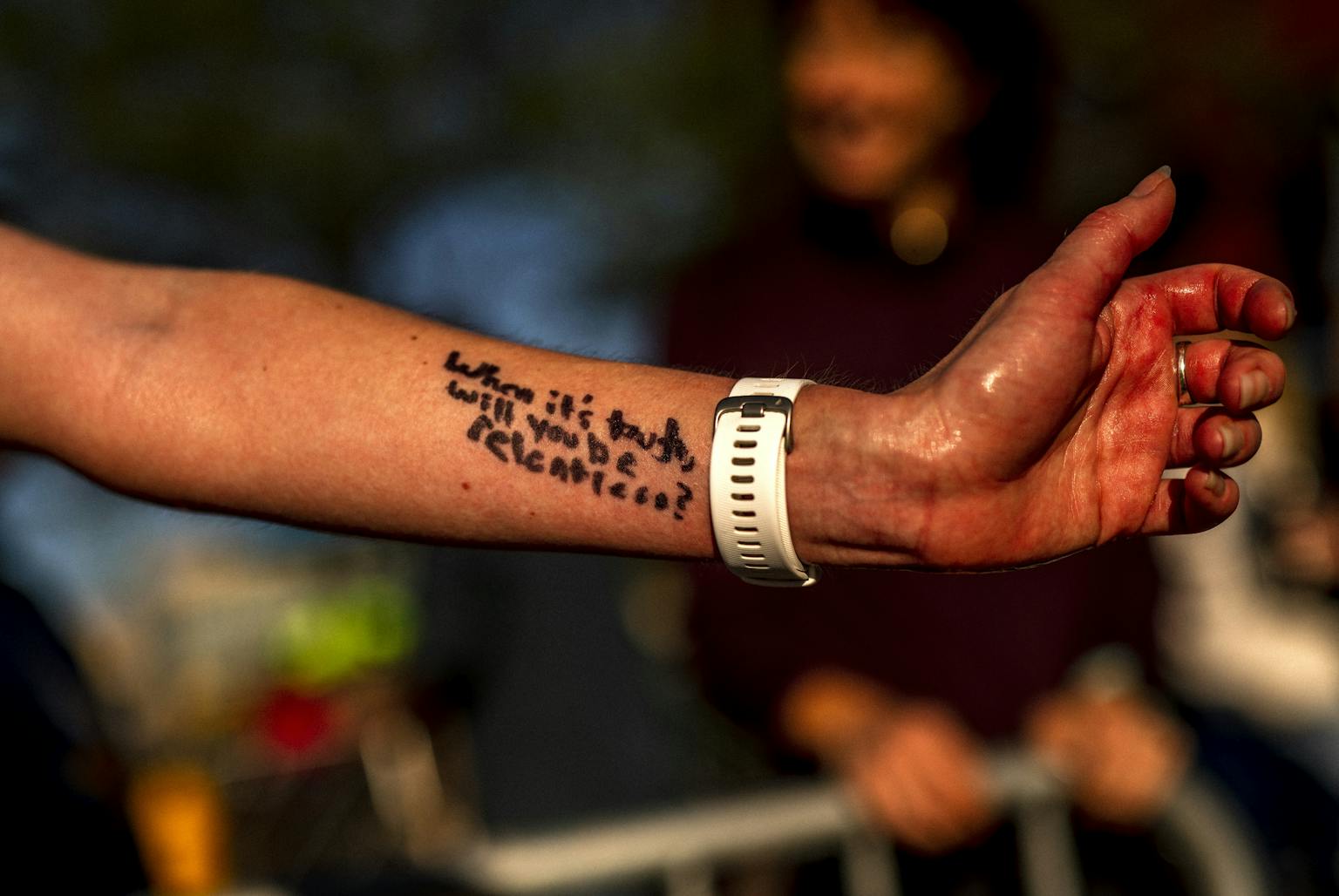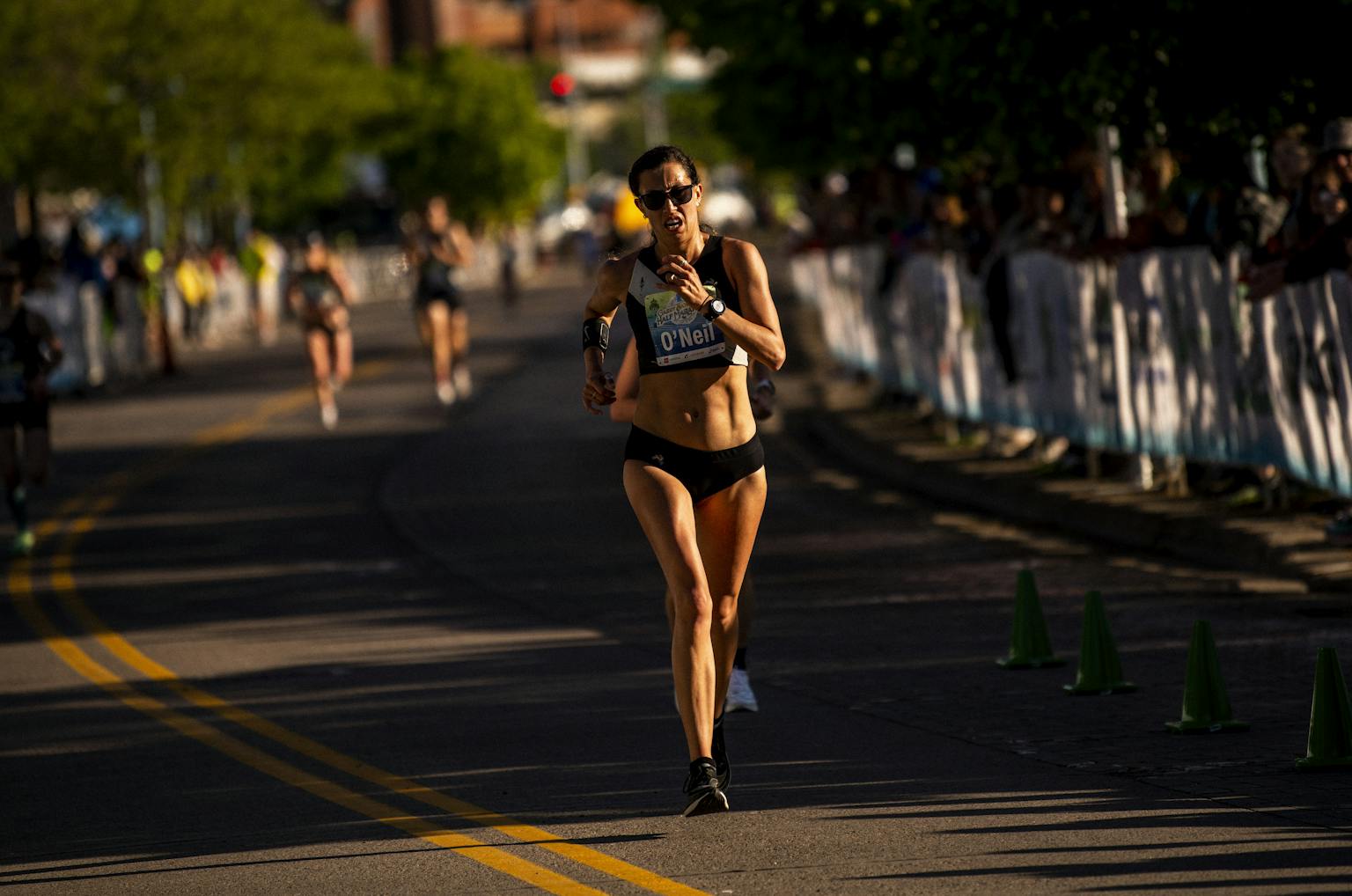Raleigh Distance Project:
Angling
the Pursuit
How the Research Triangle-based team integrates
competitive running into 9-5 jobs and community life.
Words by Hannah Borenstein
Photos by Stephen Maturen

February 2022, Friday. 6 AM. I arrive ten minutes early, making sure not to hold anyone up. Then I spot some headlights and a few cars roll up. The members of Raleigh Distance Project (RDP), and myself, are the lone occupants of the southernmost point of the American Tobacco Trail.
Known locally as the ATT, the 22.6 mile trail runs along the original railroad bed built for the American Tobacco Company, and is a well-trafficked path today. On Saturday and Sunday mornings, parking lots are flooded by many of the training groups in the area – NC State, Duke, and UNC track teams, the Puma Elite squad, many recreational cyclists, and runners. And quite often, RDP. But on winter weekday mornings at 6 AM, it’s quiet. It’s pitch black.
“Be wary of the swamp goblins,” Nikki Long jokes, as she tightens her head lamp. The joke lands, because the misty part of the ATT is quite spooky while uninhabited at the early hour. On deck for her and Lauren Archer, who is diligently tying her shoes, is a progression run. They’re further into their build ups than Caity Ashley, who has recently come off a 1:18:53 personal best at the Houston Half Marathon.
At the same time that morning, Emma Spencer has a different workout on deck at the Duke track in Durham. Gabi Séjourné is nursing an injury while Kim Maloney is not yet back training from giving birth. And Tavyn Lovitt is already in Wilmington, where she is due to run the marathon the following day.
Back at the car stretching, they discuss their plans to spectate Tavyn’s race (spoiler alert: she wins). Even though not everyone is together in person on this day, all the team members know where everyone is at – physically, mentally, emotionally - primarily by way of an active group chat. Then, by 7:30 AM, everyone is off to their day jobs.
***
Founded in 2017 as the first women’s elite distance team on the east coast, RDP has on paper, a relatively simple mission: Post-collegiate women seeking to run at an elite level. However, as a 501(c)(3) comprised of women with a wide array of full-time jobs in addition to training full time, the reality behind the simple mission is made a bit more complicated.
Unlike college and professional teams, where most athletes share similar schedules and lifestyles, the members of RDP have vastly different backgrounds both inside and outside of running. These women, with an age span of 10 years, are teachers, dieticians, software engineers, asset managers, medical students, project managers, and forensic anthropologists.
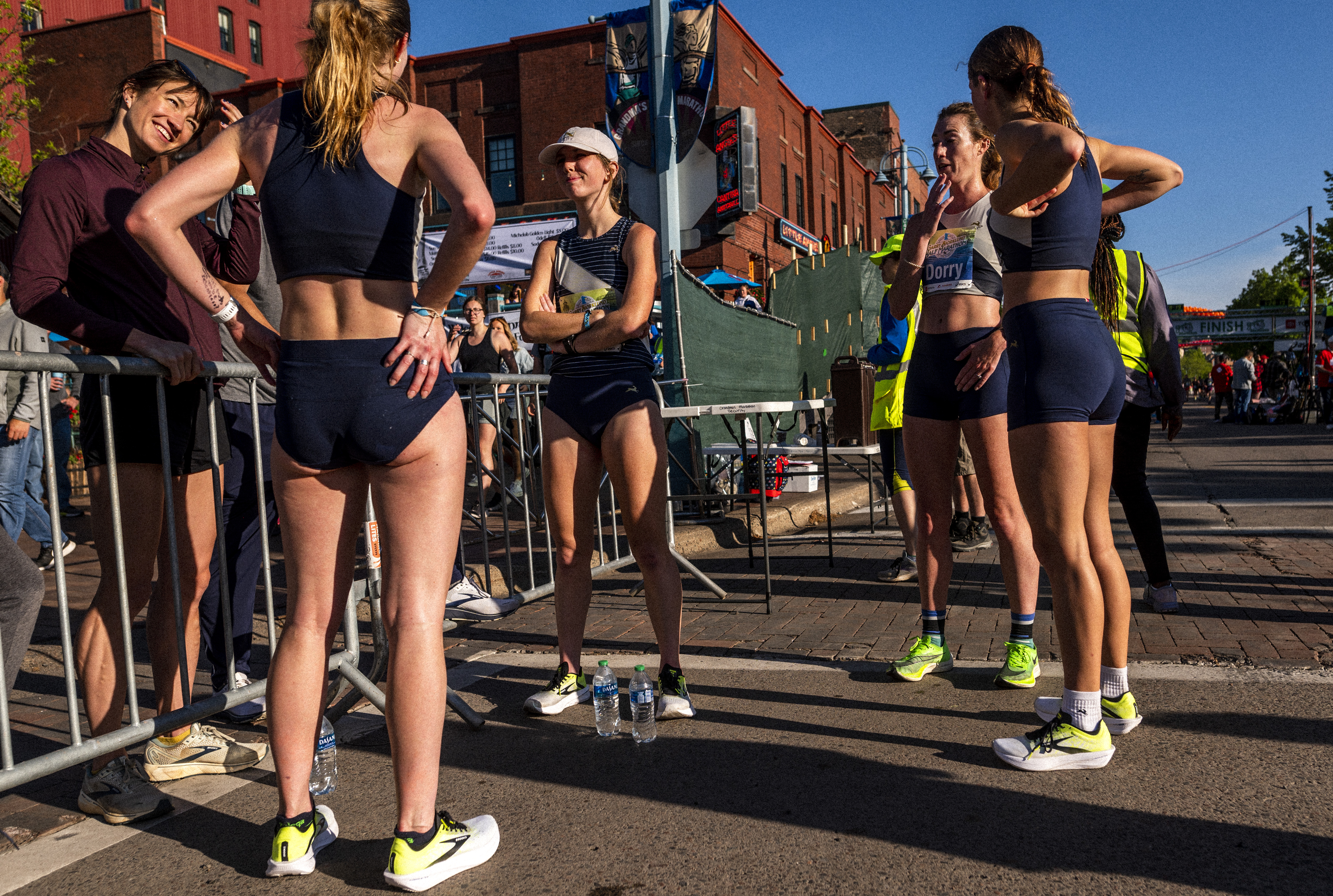
And they are an athlete-run team. That means, along with team manager Amy McDowell, they work to manage team logistics, deal with fundraising, find sponsors, secure money to travel for competitions, and reach out to race directors to secure spots in elite fields.
While it has gotten much easier, this final task is no short order; getting into races and adequate support as post-collegiate non-professional runners has its fair share of challenges, which leads to difficulty in planning and prepping for races.
But in many ways, it’s the various things in their life that make group coordination difficult, that make the commitment to each other even more salient.
“The level of care, interest and dedication from other people to see RDP succeed is nothing like I’ve ever seen before,” Nikki says, who is a team officer, and one of the longest members of the team. “Someone will just say, ‘yeah I’ll come to your practice and show up for you.’ Or, sure ‘I’ll pace your workout on a bike.’”
Spending time with RDP throughout the spring, I, too, was struck by the constant support. A week after Tavyn’s victory at the Wilmington Marathon, I met the group for another training session at Lake Johnson in Raleigh. 1k repeats were on deck, and when we came back from the warmup, Tavyn was there, camera in hand, to take photos and cheer us on during the workout.
As we took off for our first rep on the woodchip path along the lake, it began to settle in that this group is much more about finding people to run with and train hard. It’s also about people to care with and for in a place that may not be home to many.

Tavyn had just won the Wilmington Marathon by chasing down the leader in the final mile. Her teammates cheered her on with painted signs that made her laugh and chuckle, including one that read “Big Danny Devito Energy,” paying homage to one of Tavyn’s idols. Her teammates’ support has taken her aback since joining. “This is a group of people I connected with because they were juggling so many things like I was.”
In her free time, Tavyn paints. The connection between pursuing art, running, and being connected to her environment, are all embraced in RDP. “Running has inspired me to become an artistic person, and to be outside more,” she says.
“Running promotes my art because it gets me outside and makes me fonder of my environment which puts me in a better mood to make art about the area I’m in. I really feel this way in Raleigh, which is such a beautiful city.” A few weeks later, Tavyn painted a skyline of Raleigh.
The triangle, in addition to being prettier than many expect, is a surprisingly transient place. Most of the members of RDP come from elsewhere, and some are likely to leave relatively soon. But finding support while they’re here, feels vital to success.
“When you have a body of people who care about you and care about your running it makes a difference,” Emma says, a 2:36 marathoner who came to Durham from Boston in 2015. “Friends and family have provided that over the years. But then as you move from place to place you find people who just give a f* and that’s a cool thing about having a team is that other people care what you’re up to.”
Teamwork is more than enjoyable; it’s necessary, while pursuing running at a high level and working full time. That same morning Lauren, who was still recovering from Wisdom Tooth Removal Surgery, mentioned she might not be able to lead any of the reps. Nikki and Caity of course take no issue with this, and take the pace for the entirety of the workout. Another day Lauren will return the favor.
While the recipe of a group of post-collegiate women athletes who come from around the country, with a vast array of running experiences, and with eclectic professional and embraced interests (bakers, artists, dog enthusiasts, picnic experts) includes building community, there are more ingredients. The group is also intent on competing well and running fast.
Running post-collegiately can be a disorienting task. Like several college athletes, Caity took some time off after graduation, began running casually, and then developed an appetite for the structure of training and racing. “I do like the act of running but I really crave the specificity of a training cycle where everything is purposeful and intentional and you have to think about the efforts you’re putting in or not putting in,” she said.
After running her first marathon after college she started going to Cup A Joe Runs (weekly runs in Raleigh that leave from the downtown coffee shop). There, she learned of RDP and realized she could set higher goals.
Groups like RDP, and the growth of post-collegiate women’s running groups more broadly, have helped to contribute to a recent boom in women’s distance running, in both elite and amateur circles. While not everyone can be, or necessarily wants to be, full time devoted to running, groups like RDP that embrace the complexities of life and allow for rigorous training environments mean more women are stepping up to athletic challenges, and will continue to do so.
After a record 511 women qualified for the Olympic Trials in 2020, USA Track and Field dramatically lowered their standards for the 2024 competition from 2:45 to 2:37. In 2020, 260 men and 512 women qualified; the new time standards meant 169 of those men would have qualified and 91 women would have. Many are divided on whether this was too dramatic of a cut, and if it unfairly targeted women.
What I found from spending time with RDP was the benefit of being in a dynamic group of competitive women; there was more of a focus on what was possible than what was not.
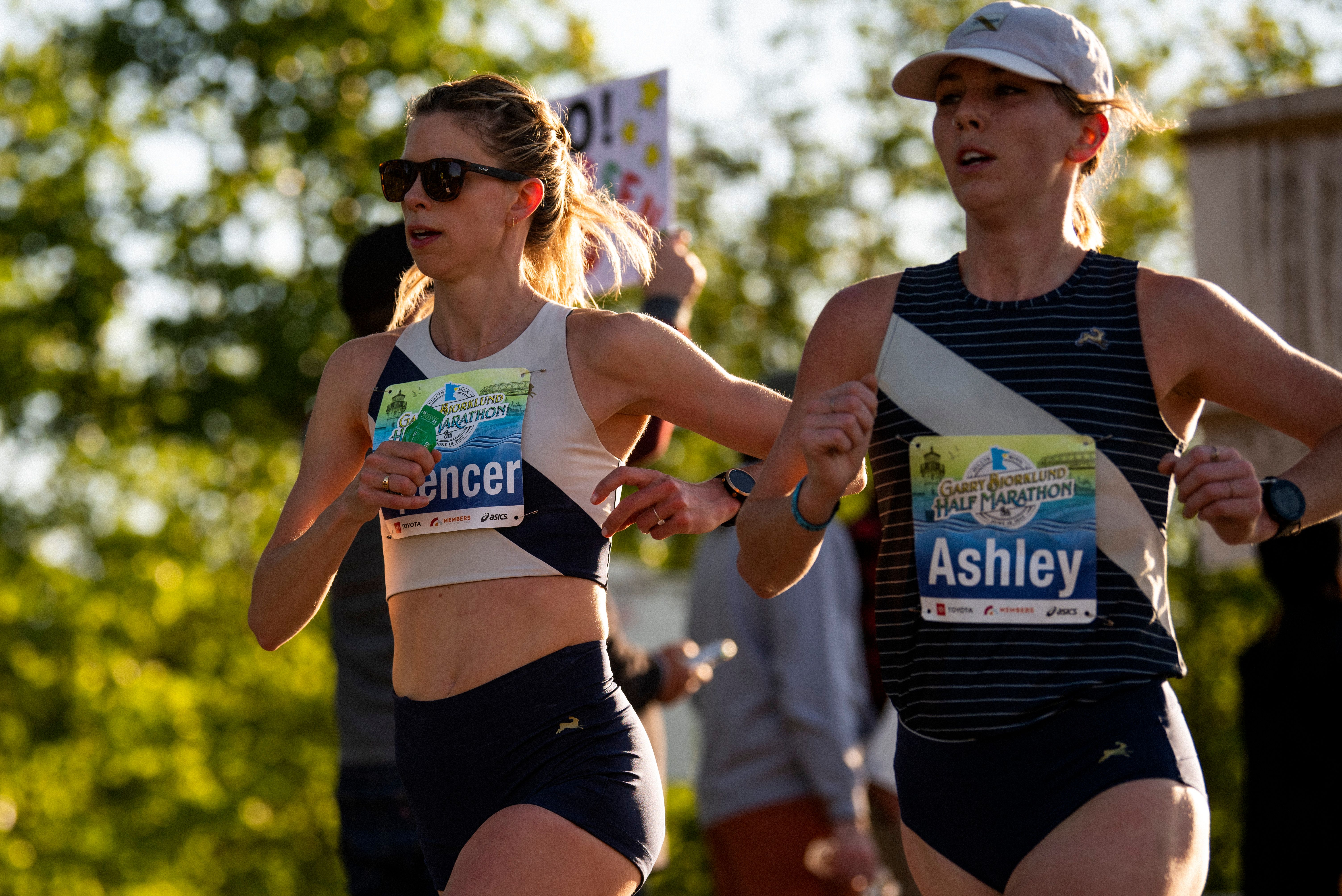
“People didn’t used to have such high expectations for growth,” Emma, one of the more experienced members, said. “Not that many years ago if you ran 3:05 in the marathon would you turn around and think: ‘I can run 2:45.’ But expectations have shifted so much. Now you have so many women that can also think: ‘I can run 2:37.’”
Emma, too, whose new goal of 2:30 in the marathon, was not one she thought she could set years back. Neither would 2:37 have been really thinkable for Tavyn, Caity, or Lauren, when they ran their first marathons after college. Nikki, a track runner, has been training her entire life, but RDP is one of the more supportive training environments she has been in, and the thought of qualifying for a national competition is now on her radar. Now with structure and support, 2:37 became possible.
In short, the members of RDP set lofty goals, but through practical means. They recognize that supporting each other, maintaining full time jobs, and enjoying the process, is what brings out competitive energies and good performances. What they do on a regular basis is not normal – there’s a reason the ATT is empty on Friday mornings at 6 A.M. – but it’s a system that works well for them.
